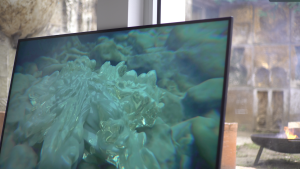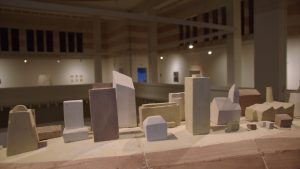Embed
Embed
Koncepcia výstavy FOLK-LORE je postavená na mapovaní a kritickom prehodnotení modelových diel domácich autorov a autoriek 20. a 21. storočia, s dôrazom na súčasnosť, ktorí/-é vo svojej tvorbe reflektujú špecifický fenomén – folklór. Ten do veľkej miery poznačil charakter našej kultúry.
Výstava ukáže široké spektrum výtvarných stratégií, kde vo vzťahu k skúmanej problematike prevládajú apropriačné postupy, keď dielo nevzniká ex nihilo, ale vychádza z už existujúcich obrazov a umeleckých foriem, ktoré sa vzťahujú na folklór a ľudovú kultúru, ale aj na dejiny umenia.
V širšom kontexte skúmanej problematiky výstava reflektuje aj aktuálny, tzv. nový folklór, ktorý súvisí s návratom k prírode, vidieku, k jednoduchosti, blízkosti ľudí, akejsi „človečiny“, ako opozícia voči neosobnému rušnému mestskému životu. Tento trend je vidieť nielen vo výtvarnom umení a vizuálnej kultúre, ale aj v literatúre, dizajne a hudbe.
Dôležitým cieľom je zasadenie modelových diel domácich autoriek a autorov do širšieho generačného spektra (od reprezentantov moderny a neskorej moderny až po súčasnosť), odlišných poetík a výtvarných stratégií, čím vznikne nielen zaujímavý dialóg, ale aj kritický diskurz odrážajúci špecifiká jednotlivých kapitol našich dejín umenia a spoločnosti.
The concept of the exhibition FOLK-LORE was built on the mapping and critical reassessment of artworks made by local artists of the 20th and 21st centuries. It considers the impact on the present. The artists focus on a specific phenomenon – folklore, that has had a tremendous impact on the Slovak culture.
The exhibition shows a wide spectrum of artistic strategies, where appropriative procedures prevail. The artworks weren’t made ex nihilo, they come out of already existing paintings and artworks that focus on folklore and folk culture, as well as art history.
The wider context of this issue reflects on the so-called new folklore that focuses on the return to nature, village life, simplicity, the closeness of people, and the human side as an opposition towards the impersonal, busy city life. This trend is visible not only in art and visual culture, but also in literature, design, and music. An important goal is to plant these artworks into a wider generational spectrum (from representants of Modernism and late Modernism until contemporary art), different poetics and art strategies, which leads to not only an interesting dialogue, but also a critical discourse that reflects specifics of separate chapters of our art history and society.















